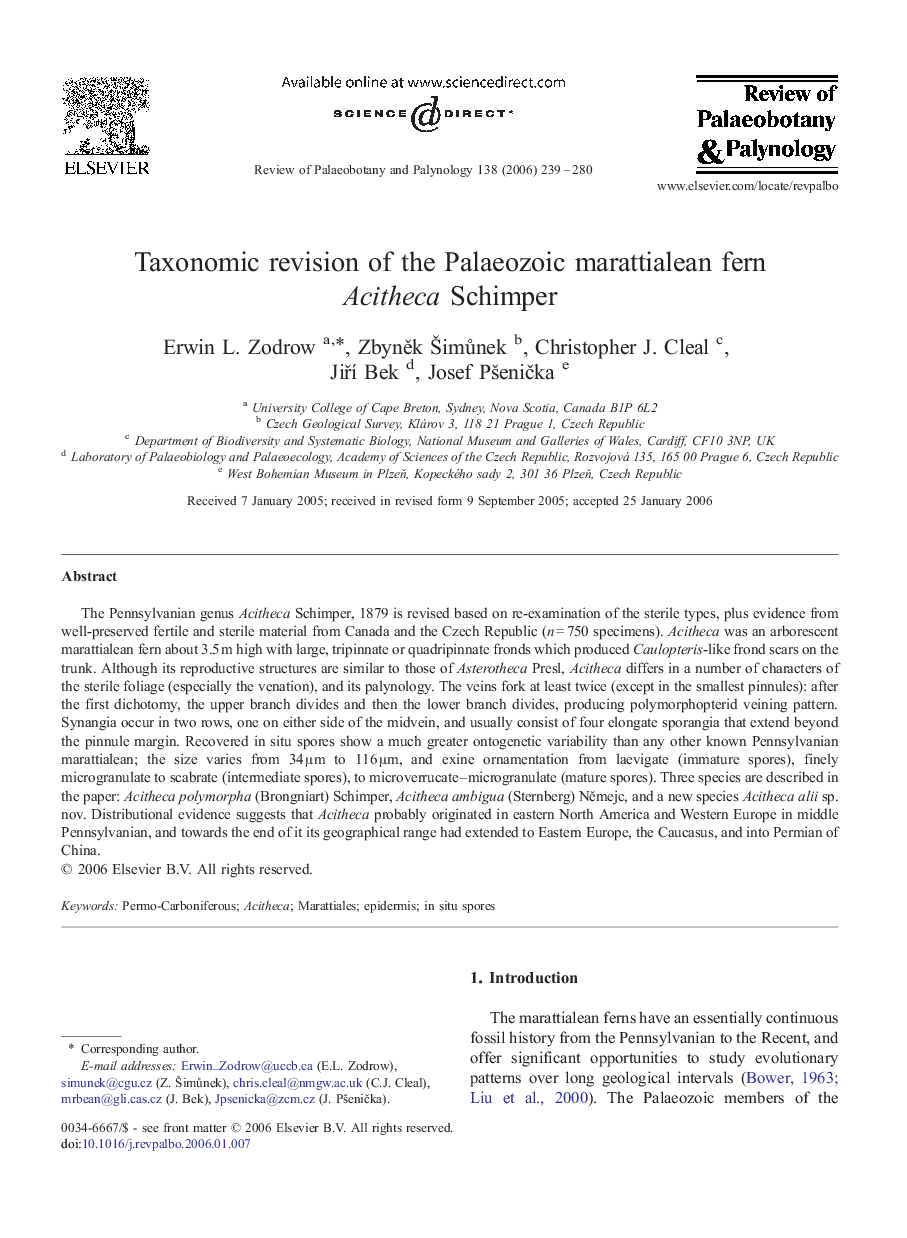| Article ID | Journal | Published Year | Pages | File Type |
|---|---|---|---|---|
| 4751223 | Review of Palaeobotany and Palynology | 2006 | 42 Pages |
The Pennsylvanian genus Acitheca Schimper, 1879 is revised based on re-examination of the sterile types, plus evidence from well-preserved fertile and sterile material from Canada and the Czech Republic (n = 750 specimens). Acitheca was an arborescent marattialean fern about 3.5 m high with large, tripinnate or quadripinnate fronds which produced Caulopteris-like frond scars on the trunk. Although its reproductive structures are similar to those of Asterotheca Presl, Acitheca differs in a number of characters of the sterile foliage (especially the venation), and its palynology. The veins fork at least twice (except in the smallest pinnules): after the first dichotomy, the upper branch divides and then the lower branch divides, producing polymorphopterid veining pattern. Synangia occur in two rows, one on either side of the midvein, and usually consist of four elongate sporangia that extend beyond the pinnule margin. Recovered in situ spores show a much greater ontogenetic variability than any other known Pennsylvanian marattialean; the size varies from 34 μm to 116 μm, and exine ornamentation from laevigate (immature spores), finely microgranulate to scabrate (intermediate spores), to microverrucate–microgranulate (mature spores). Three species are described in the paper: Acitheca polymorpha (Brongniart) Schimper, Acitheca ambigua (Sternberg) Němejc, and a new species Acitheca alii sp. nov. Distributional evidence suggests that Acitheca probably originated in eastern North America and Western Europe in middle Pennsylvanian, and towards the end of it its geographical range had extended to Eastern Europe, the Caucasus, and into Permian of China.
